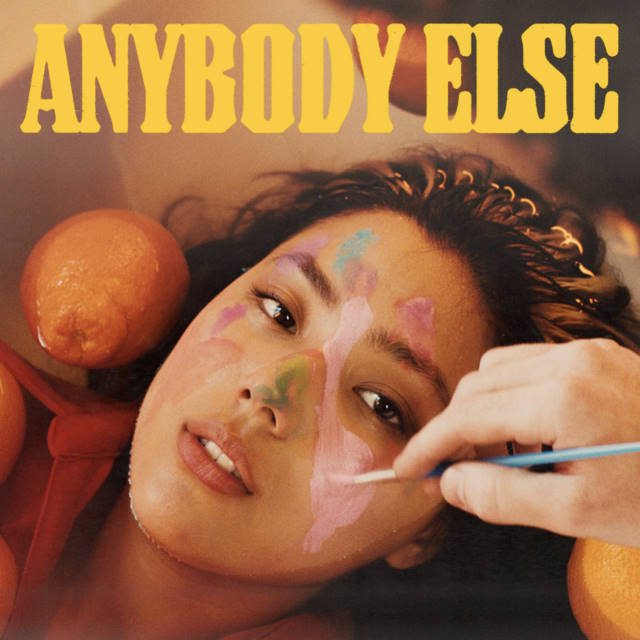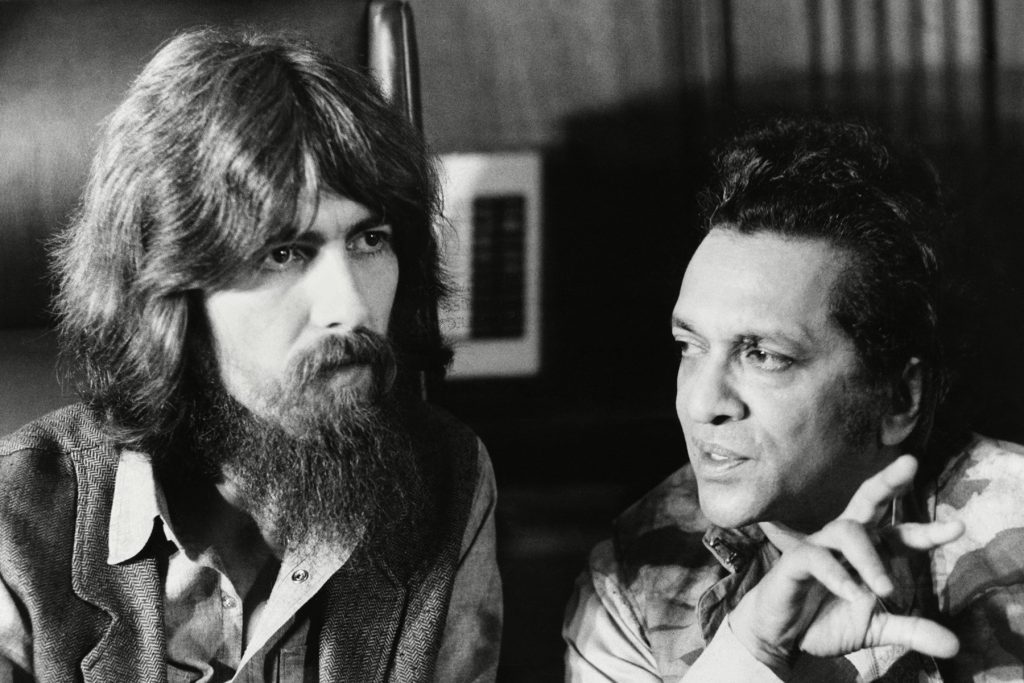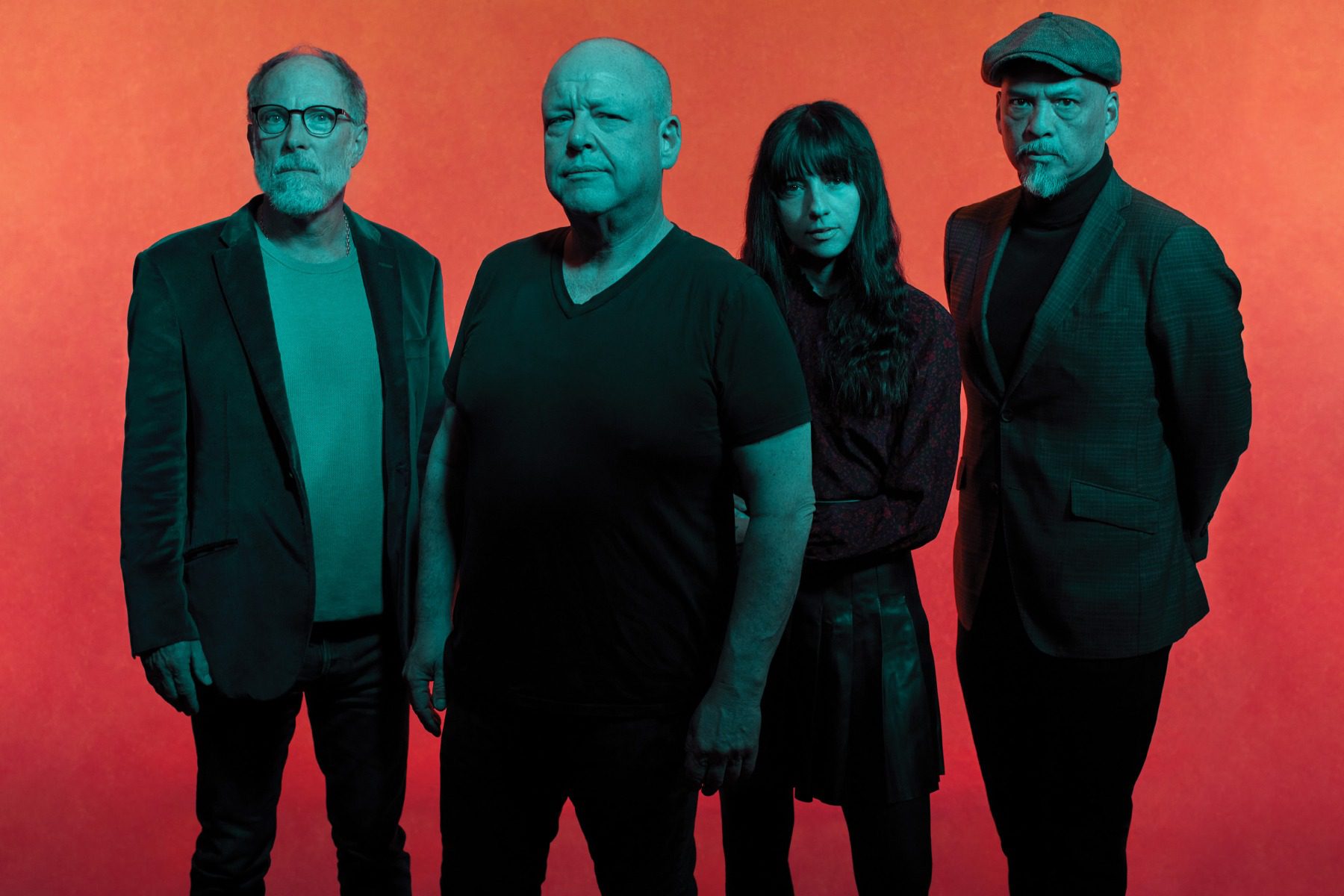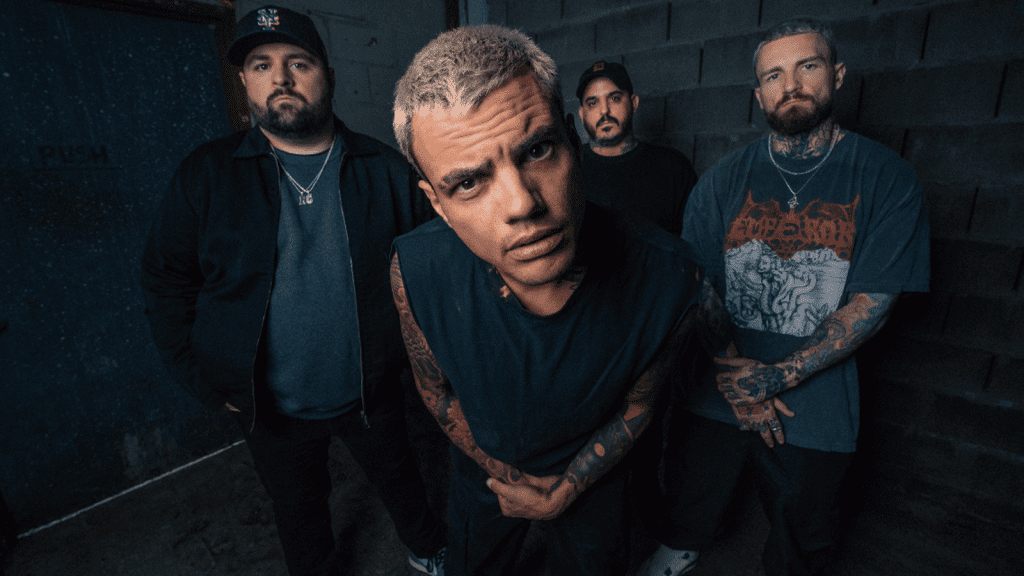
Clinton Heylin Wrote Eight Bob Dylan Books. Then He Realized He Needed to Start All Over
Clinton Heylin has written eight books about Bob Dylan during the past 30 years, including the acclaimed 1991 biography Behind the Shades (which he updated in 2001 and 2011), making it seem unlikely he’d ever have anything new to say on the subject. But then the news hit in 2016 that Dylan had unloaded a 6,000-piece collection of lyric manuscripts, notebooks, photographs, letters, and audio and video materials to the George Kaiser Family Foundation, most of it never before seen by the public.
The materials are housed at a research facility in Tulsa, Oklahoma. And once Heylin visited and realized the true breadth of the collection, which includes the complete session tapes from Dylan’s catalog, along with raw footage from documentaries like Don’t Look Back and Eat the Document, he knew he couldn’t simply use them for a mere update of Behind the Shades. He’d have to start from scratch and write a completely new biography.
The result is The Double Life of Bob Dylan: A Restless, Hungry Feeling, 1941–1966, which arrives on May 18th. (A second volume is already in the works.) Unlike Behind the Shades, this one draws largely on primary source materials and relies as little as possible on the often-unreliable memories of Dylan associates, especially since they’re now recalling things from well over 50 years ago. There’s also very few after-the-fact quotes from Dylan himself since he’s a notoriously unreliable narrator of his own past.
blogherads.adq.push(function () {
blogherads
.defineSlot( ‘medrec’, ‘gpt-dsk-tab-article-inbody1-uid0’ )
.setTargeting( ‘pos’, [“mid-article”,”mid”,”in-article1″,”mid-article1″] )
.setSubAdUnitPath(“music//article//inbody1”)
.addSize([[300,250],[620,350],[2,2],[3,3],[2,4],[4,2]])
;
});
That lifetime habit of obfuscation is coupled with the fact that many of his closest confidantes have either never gone public with their stories or offered little but sanitized, distorted anecdotes. This has made it very hard to uncover the actual true story of Dylan’s life, but The Double Life of Bob Dylan gets closer to it than any previous work.
We phoned up Heylin in England to talk about his research process, what’s in store for the next volume, and his favorite (and least favorite) Dylan albums, along with his favorite era of the Never Ending Tour.
When did you realize that you didn’t just want to revise Behind the Shades, but to actually start over?
The first time that I went to Tulsa. I was first there for a conference and I only spent four or five days, but it was immediately apparent that the sheer scale of what they had required a re-think. By that point, Behind the Shades was nearly 20 years old. The last time I did a major revision of it was 2000. And since then, the internet obviously kicked in. I’d also done a lot of work on manuscripts that had come up for auction that I’d been asked to look at. I had access to Sony memos and unpublished lyric drafts. In tandem with Tulsa and getting access to the session tapes, I just realized it was more than a revision that was required.
Prior to going to Tulsa, did you realize that this incredible archive of materials even existed?
Shortly before that, yes. I knew that the Dylan office was cataloging some things. They were kind enough to let me see the material for Lost on the River, that pre–Basement Tapes material, when that project was being done. I helped with the documentary they were creating and I realized that there was some excavating going on if they’d turned up that type of material.
That material was revelatory since it was a missing period. There had been no documentation about that material. Audio excavations were already starting to happen. They were going through the tapes. And I had some roles to play in some of the Bootleg Series, especially the Basement Tapes one since they ended up using some of my tapes. [Laughs] The original weren’t at hand.
There was a process, but getting a sense of the picture was different. Seeing the boxes and the manuscripts in Tulsa and looking at the audio files, I knew it was time to do something on a bigger scale.
blogherads.adq.push(function () {
blogherads
.defineSlot( ‘medrec’, ‘gpt-dsk-tab-article-inbody2-uid1’ )
.setTargeting( ‘pos’, [“mid-article2″,”mid”,”in-article2″,”mid-article”] )
.setSubAdUnitPath(“music//article//inbody2”)
.addSize([[300,250],[300,251],[620,350],[2,4],[4,2],[3,3]])
;
});
How much time did you spend in Tulsa?
Ten weeks. It was four separate trips that total ten weeks. One trip was four and a half weeks. That was the longest. And I worked nine to five. That’s a fair bit of time. I did a lot of work on Volume Two, but the Covid thing shut that down. I still need to go through a lot of the Eighties session tapes.
Your first time there, were you overwhelmed? There’s so many things to go through that I imagine you didn’t know where to start.
I knew where to start. I knew I was doing my little monograph on Blood on the Tracks since I knew they were working on More Blood, More Tracks. The first time I was there, essentially, I went through the two notebooks for Blood on the Tracks. If I came across stuff while I was there, fine, but I just kept to the Blood on the Tracks material since I already had a copy of the Morgan Library notebook. I was able to make sense of that reasonably quickly.
The office was kind enough to let me see the proper finding aid instead of the document they used to attract interest from academic institutions. And once I saw that, obviously I knew. It gave a sense of just how much manuscript material there was.
Do you view this book as a companion to Behind the Shades? Should fans read them in tandem?
Of course, it’s a strange situation. You don’t normally do a complete new book on a subject you’ve already seemingly covered. I tried to make it a very different book. As I say in the introduction, I tried to use material that has historical veracity. By that, I mean a document, tapes, contemporary recollections rather than latter-day recollections. There’s still great anecdotal stories in Behind the Shades that absolutely reward reading.
But my approach this time was, “Look, we know this. We know this is what it is.” If you find the memo that John Hammond sends to his superiors in October 1962 trying to close down Dylan’s attempt to get out of the contract, then you know that’s what happened. It’s in black and white. You have Dylan’s version of what happened. You have John Hammond’s version of what happened. Those are of interest. But the hard fact from documentary evidence is what I’m after this time.
As I say in the introduction, at this point, although I’ve kept in contact with a lot of the people that I’ve interviewed over the years, and fact-checked with those people, in terms of getting new oral history, it’s kind of getting to the point where you’re not getting a lot. Either the stories have been told or the memories have been diminished.
It’s showing that human memory is very fallible. We don’t have computers in our heads to record things perfectly. And if you tell a story enough times, you don’t even realize that it slowly changes.
Absolutely. If it’s the artist himself, then you can learn a lot by the way he changes the story. The way he takes a story in a particular direction is significant. It’s reflective of his state of mind when he’s saying it, not reflective of his state of mind back then.
blogherads.adq.push(function () {
blogherads
.defineSlot( ‘medrec’, ‘gpt-dsk-tab-inbodyX-uid2’ )
.setTargeting( ‘pos’, [“mid”,”mid-articleX”,”in-articleX”,”mid-article”] )
.setSubAdUnitPath(“music//article//inbodyX”)
.addSize([[300,250],[300,251],[3,3],[620,350]])
.setLazyLoadMultiplier(2)
;
});
You have the classic story where Dylan tells [Robert] Shelton that he came to New York and lived as a rent boy for a few months. You know that’s a Rimbaudian fancy. At the time that he said it, he was obsessed with Arthur Rimbaud. It doesn’t tell us much about what he did in 1961, but it tells us a lot about 1966.
Chronicles has all this stuff about the American Civil War and Roman and Greek authors. This was a reflection of his mindset when he wrote the book. They are things that fascinate him now, or certainly fascinated him in 2000, not things that fascinated him in 1962.
The musicians that played on Blonde on Blonde talked about the sessions quite a bit over the past 50 years. Their actual memories of the sessions are probably pretty compromised by this point.
One thing that’s fascinating that I do in the new book is look at what people said at the time. When I looked at Charlie McCoy’s version that he gave at the time, that he give in Hit Parade in October 1966, he gets all the historical information right. He remembers Dylan arriving from Richmond, Virginia. That’s a serious little piece of information to have remembered.
What he can’t remember is that Dylan didn’t write “Sad Eyed Lady of the Lowlands” when he landed. He wrote it three days later. And in the interim, he recorded most of the album. He wrote “Sad Eyed Lady” because he’d run out of songs he intended to record, not because he’d arrive from Richmond and went, “Shit, I don’t have any songs.” Even at the time, he tweaked it.
I’ve read so many times that Dylan was known as “Hammond’s Folly” around the label in 1962 and 1963. It’s a good story, but it’s just not true.
I went to a lot of trouble trying to find the first reference to “Hammond’s Folly.” I can’t find any contemporary reference. The first one is Robert Shelton in 1966, which is late. And it’s clear he was told that story by Hammond. And by 1966, Hammond has his own reasons for wanting to present that story. After discovering Dylan, his name fell off the cliff again since he hadn’t actually found anyone else, and so he starts to develop the story.
There’s no way to get back there, but the name is never referred to in the memos. And the October 1962 long memo that Hammond sends to his bosses absolutely blows the “Hammond’s Folly” story out of the water. The first album had been out less than six months at that point and they are desperately trying to hang on to Dylan. The album is not selling particularly, but they already realize they’ve got something. They go to extraordinary lengths to hold onto him. The idea that he’s “Hammond’s Folly” is absurd.
Another great thing about your book is that you have access to the raw session tapes, including banter between Dylan and his musicians and Dylan and his producers. That stuff wasn’t even released on the Bootleg Series albums.
It wasn’t even released on the copyright protections. They edited out the conversations between the takes. And some of them are extremely revealing. In the Hammond ones, it’s pretty clear that Dylan is unhappy with some of the things that are going on. The “Talkin’ Bear Mountain [Picnic Massacre Blues]” take, you can tell that Dylan is furious. Hammond tells him to do an insert and then the tape goes dead. When it starts again, it’s a full take. Dylan had clearly refused. He has a long history of disliking inserts.
blogherads.adq.push(function () {
blogherads
.defineSlot( ‘medrec’, ‘gpt-dsk-tab-inbodyX-uid3’ )
.setTargeting( ‘pos’, [“mid”,”mid-articleX”,”in-articleX”,”mid-article”] )
.setSubAdUnitPath(“music//article//inbodyX”)
.addSize([[300,250],[300,251],[3,3],[620,350]])
.setLazyLoadMultiplier(2)
;
});
With “Mixed-Up Confusion,” it’s a shame that guitarist George Barnes is dead. He basically took over the production. It would be fantastic to hear his version. Here’s a guy who played guitar on the first-ever electric guitar session with Big Bill Broonzy in 1938. And suddenly he’s taking over producing the bloody single. He’s meant to be playing guitar, but you suddenly hear him over all of the talkback. He’s literally taking over the session. [Laughs] I don’t know whose idea that was, but to basically produce John Hammond in front of him, it suggests something dramatic.
To be clear, in Tulsa, you have access to every second of session tape that exists in Dylan’s history?
Yeah. But I didn’t hear everything in Tulsa. I had access to some of that stuff in New York. But yes, all of the tapes are in Tulsa.
And this is stuff you didn’t have access to when you did your first book.
Oh, no. The session tapes simply didn’t exist outside of Sony. No one had been able to access those. This has only been possible since all this stuff was transferred to hi-res digital. Sony did that in the early 2000s. That’s the point at which the tapes were excavated by Sony and gone through. That work has only literally just been done.
In fact, there were two points where I went through the tapes and there are two missing songs. One is from 1962 and one is from 1963. They weren’t on the copyright protection releases because they didn’t know they were there.
blogherads.adq.push(function () {
blogherads
.defineSlot( ‘medrec’, ‘gpt-dsk-tab-inbodyX-uid4’ )
.setTargeting( ‘pos’, [“mid”,”mid-articleX”,”in-articleX”,”mid-article”] )
.setSubAdUnitPath(“music//article//inbodyX”)
.addSize([[300,250],[300,251],[3,3],[620,350]])
.setLazyLoadMultiplier(2)
;
});
These are unheard compositions?
Yeah. There’s a blues thing that Dylan goes into in the middle of the “Mixed-Up Confusion” session. And there’s an instrumental in the “The Times They Are a-Changin’” session, but Dylan gives it a title. It’s a proper instrumental, not a jam. Because they weren’t logged on the studio logs, they were missed.
Are you tempted to do new versions of your song-by-song books now that you have access to all this stuff?
Tempted, yes. But I’m not going to. Unfortunately, the sheer scale of the material is such that I’d literally have to start again. I did those books in good faith. I was thinking, “This is it. This is the 600 Bob Dylan songs that we know.” Now it’s 900. There are so many unknown songs that we didn’t know about, if you follow the story through the present, that would be a whole exercise in itself.
And, of course, there’s the dating of the material that’s in there. It would have to be massively re-done. It’s now possible to put together a chronology of song composition with things like the Infidels albums. You can actually put those songs in composition order, which I couldn’t. I could only put them in session order.
It would be a huge amount of work. I’d have to let the office agree to let me quote unpublished lyrics, which is a whole work in and of itself, of a big scale. To be honest, it just wouldn’t … I’ll leave it to someone else to do that.
When I finish the second volume, I’m hoping to put a table in the back of all the songs in the correct composition order to correct my work from Revolution in the Air and Still on the Road.
Is the second book going to cover from 1966 to the present?
As it stands at the moment. I tried to persuade my publisher in the U.K. and the U.S. to consider the possibility of three volumes, but it doesn’t look like it. I’ve explained to them that if it’s one volume, it’s going to be a bloody big volume [laughs]. But they say, “OK.” As long as they’re happy with a 275,000-word second volume, they’ll get a 275,000-word volume.
Tulsa seems to have more papers for his middle years and his later years than his early years, so it’s going to be a lot for you to go over.
Everything we’re talking about is going to give the impression that the first volume is a Tulsa volume. And it isn’t. The irony of it is that a lot of the material in the first volume is non-Tulsa-related. A lot of the Sony memos and weird 1960 poems that showed up at auction have nothing to do with Tulsa.
The Tulsa material in the first volume relates largely to audio and video material. In other words, all of the Don’t Look Back outtake material, which is fantastic, and all of the Eat the Document material. There’s also the two-and-a-half–hour conversation at Tony Glover’s apartment in 1963 with Paul Nelson, which obviously I used a lot of. All of that is Tulsa-related and is on Volume One. But in terms of the manuscripts, the only material that’s in there that is really Tulsa-related is the Tarantula material. Ironically, having talked about Tulsa, the second volume is completely Tulsa.
blogherads.adq.push(function () {
blogherads
.defineSlot( ‘medrec’, ‘gpt-dsk-tab-inbodyX-uid5’ )
.setTargeting( ‘pos’, [“mid”,”mid-articleX”,”in-articleX”,”mid-article”] )
.setSubAdUnitPath(“music//article//inbodyX”)
.addSize([[300,250],[300,251],[3,3],[620,350]])
.setLazyLoadMultiplier(2)
;
});
[Albert Grossman’s assistant] Naomi Saltzman didn’t start bending Dylan’s arm to keep this stuff until after the accident. Anything Tulsa has that is pre-1966 is an accident. Dylan didn’t keep anything pre-1966. What they have, like the 1965 and 1966 lyrics, those came from Sally Grossman when they took legal action to stop her from auctioning it. It’s not material that he kept. It’s material that they got back.
Chronicles: Volume One is obviously not a straightforward history book. What frustrates you most about it, just as a student of history?
What really perplexes me is that I’ve seen only a smidgen, but enough, of the early drafts of Chronicles to wonder what happened. The early drafts, of course they’re Dylanesque, of course they see things very much through his prism, but there’s no conscious attempt to literally destroy history, to bend it to your will and show it to be a sham. The book that was published was very much that.
And so at some point between 1997 when I quote that paragraph in my book, and 2004, when the book was published, Dylan had a complete re-think and decided that history is bunk. I’m guessing what happened is he started work on Masked and Anonymous. But of course it’s legitimate to do it in Masked and Anonymous because it’s a work of fiction. But to take that and run with it in what’s supposed to be a memoir, it’s clearly a conscious decisions. And it’s one he made after he started conceptualizing Chronicles. I don’t understand why he did it.
Did you think the documentary No Direction Home was historically accurate?
Well, Scorsese can only work with what he’s got, and what he’s got was a collection of interviews that Jeff [Rosen] did with people. Obviously, he got to some important people, but the thing that we’re talking about is already a problem. The film is about the early Sixties. It’s not about Dylan’s contemporary career. It’s about things that happened 35 years earlier. Well, the people that he’s interviewing, most of those people, their memories are already extremely dubious. [Folklore center proprietor] Izzy Young was telling outrageous lies in 1965. The interview that I use from 1965 with Izzy is fabulous, but it’s clear the amount of resentment that he feels even then. That’s an unpublished interview, and a huge one, 28 pages.
But the interview in No Direction Home is a waste of time. It’s all that, but 25, 35 more years of resentment. That’s always a problem. Of course, Suze Rotolo was very uncomfortable doing the interview. She didn’t like being filmed.
Was her book helpful to you when you were doing your book?
Yeah. It was, actually. When I read it when it first came out, I was disappointed. But I was disappointed because of my own expectations because of what I thought might be in there. And it certainly needed editing. I don’t know why the editor allowed the trip to Italy to be covered in 20 pages. And then to spend 60 pages about a trip to Cuba after she broke up with Bob is just ridiculous. It’s the editor’s job to get on top of stuff like that.
blogherads.adq.push(function () {
blogherads
.defineSlot( ‘medrec’, ‘gpt-dsk-tab-inbodyX-uid6’ )
.setTargeting( ‘pos’, [“mid”,”mid-articleX”,”in-articleX”,”mid-article”] )
.setSubAdUnitPath(“music//article//inbodyX”)
.addSize([[300,250],[300,251],[3,3],[620,350]])
.setLazyLoadMultiplier(2)
;
});
But Suze’s take on not just Bob, but all the stuff that was going around, all the interactions, was really interesting. She actually has a very good take on people. In the book, I refer to comments she makes about “beady-eyed bodyguards,” and of course, at the time she wrote it, she doesn’t name Victor Maymudes, but it’s obviously that’s who she means.
Do you view this book and the next volume as your final statements on Dylan’s life, or is this just an ongoing project for you?
[Laughs] Whatever I say, I’m hanging myself, aren’t I? The answer is, I hope it’s the last one. That’s not because I don’t enjoy going back to the well, but just because there are other books I want to write. I think it’s high time that someone else took over. It’s like, “There you are, run with it.”
I’m sure Tulsa is going to lead to a flood of Dylan books about certain time periods and certain albums.
Yeah. I had a nice message from Robert Polito today. He’s working on a book about Bob from the Nineties onwards. He’s been working on it for some time. He’s a fine writer and it’s a really interesting subject. In a biography, even if it’s me and not Howard Sounes, that time period is still only going to be covered in 120 pages. On a biographical level, it’s not that interesting. As a Dylan scholar and Dylan collector of many years standing, it interests me. But writing 250 pages about the Never Ending Tour, who is that for?
Are you growing fond of Tulsa? Do you like spending all this time there?
I genuinely have a great time in terms of the people that I meet. I like the Arts District and [librarian and collections manager] Mark Davidson is a fantastic sidekick when I’m doing my things. I do like the town, but the weekends are killer. There’s just not a lot going on. When I was there for four weeks, it was tough because outside of the Arts District, it is a small town.
But I really like the people, and working at the museum is a joy. I don’t know how the center is going to work out because that’s going to be a very different work space. We’ll have to see. But I agree with you that once the center opens, it’ll open up a lot of things. It will generate a dialogue.
I want move on to some general questions about your Dylan fandom. What’s your favorite album?
Official album, Blood on the Tracks. It’s the second Dylan album I ever bought. It’s still the album that holds up for me the most.
blogherads.adq.push(function () {
blogherads
.defineSlot( ‘medrec’, ‘gpt-dsk-tab-inbodyX-uid7’ )
.setTargeting( ‘pos’, [“mid”,”mid-articleX”,”in-articleX”,”mid-article”] )
.setSubAdUnitPath(“music//article//inbodyX”)
.addSize([[300,250],[300,251],[3,3],[620,350]])
.setLazyLoadMultiplier(2)
;
});
Your least favorite Dylan album?
[Laughs] That’s a cruel thing to ask, particularly given the recent output of covers albums. It might be fairer to ask me my least favorite album of Dylan songs that he wrote. Some of the covers records … Triplicate is almost unlistenable to me, and the same for Christmas in the Heart or whatever the hell it’s called. [Laughs.]
So, your least favorite album of Dylan originals?
I guess it would probably have to be Together Through Life. It has one great song on it, “Forgetful Heart.”
What’s your favorite period of the Never Ending Tour?
That is a tough one. It’s something I lived in real time. I’ve seen well over 100 Never Ending Tour shows over the years. My fondest memories of it, and this will sound a bit strange to people if they know their Never Ending Tour stuff, is 1995. That year was amazing, absolutely amazing. And I was lucky enough to see the first concert in Prague. That’s still probably my favorite Dylan concert of all time. And I saw the final concert in Philadelphia at the Electric Factory. I saw a lot of shows that year. The whole year was fascinating in terms of the shifts and changes that he went through.
Prague was such an extraordinary, stunning moment since it came out of nowhere. I’ll put that show next to any 1966 show you want to pick. It really was just an amazing show. I was so happy to have been there.
I’m partial to 1997 to 2002.
One of my all-time favorites was the 2000 shows he did in England. He did two shows at the Portsmouth Guildhall. That is a small place. It holds just over 1,000 people. It was famous for having the best acoustics. They actually tested the first-ever stereo recording that was ever done for radio at Portsmouth Guildhall because it was the best place. And so the sound is fantastic, it’s tiny, and Dylan did two nights there in September of 2000. And two or three versions are on that Japanese Bob live album, including the best version of “Things Have Changed.”
They were just great shows. He wasn’t really pushing anything. He started doing those “Hallelujah, I’m Ready to Go” opening country-style Stanley Brothers religious songs. I loved those shows. And 1997–98 for the Time Out of Mind material was great.
blogherads.adq.push(function () {
blogherads
.defineSlot( ‘medrec’, ‘gpt-dsk-tab-inbodyX-uid8’ )
.setTargeting( ‘pos’, [“mid”,”mid-articleX”,”in-articleX”,”mid-article”] )
.setSubAdUnitPath(“music//article//inbodyX”)
.addSize([[300,250],[300,251],[3,3],[620,350]])
.setLazyLoadMultiplier(2)
;
});
I have to say, after 2002, I stopped becoming interested in the live material. I’m not wild about the band and the set list and I don’t think the Love and Theft material sounds particularly good live. But I’ve seen good shows since then. The Albert Hall show I saw in 2015 was really great. He did a wonderful “Scarlet Town,” a wonderful “Forgetful Heart.” He’s still capable of surprising me. And obviously, Rough and Rowdy Ways was a delight to see he still can do it. He keeps us on our toes. But I don’t envision going to a lot of live Bob Dylan shows in the future even if he returns to touring.
This is his first year off in a very long time.
I remember talking to [Good as I Been To You producer and Dylan friend] Debbie Gold about the difference between Love and Theft and Modern Times in terms of Dylan’s voice and how much better the singing is on Modern Times. It’s five years later. It shouldn’t be better. But it’s all in terms of when he took his tour break.
When he recorded Love and Theft, his voice was shot. On Modern Times, his voice is in shape. He’s been working at it. He goes in and his voice is good, relative to what it can be. She said, “Yeah, it was conscious. He told me that.”
But I don’t know. Without having an inside track on what Bob has been doing to keep himself sane, I’m guessing making gates, or something.
If you had the chance to ask Dylan one question, what would it be? What would you want to hear him talk about in an honest way?
In an honest way? If I could get him to answer honestly, I’d ask him something about either motorcycles or Child Ballads. Both of which fascinate me, both of which I have a similar passion to him for. He keeps his knowledge of Child Ballads under the lid, but he certainly knows his Child Ballads. It’s a subject I’d love to talk to him about. And it’s something that’s not about fame or the mythology or the image. It’s just about a passion that we share.
Do you have any sort of a timeline on when the second volume might be done?
Well, I’ve lost almost a year. It was supposed to be 2023, but I don’t think so. I think it’ll be 2024. That’s the goal, three years.




